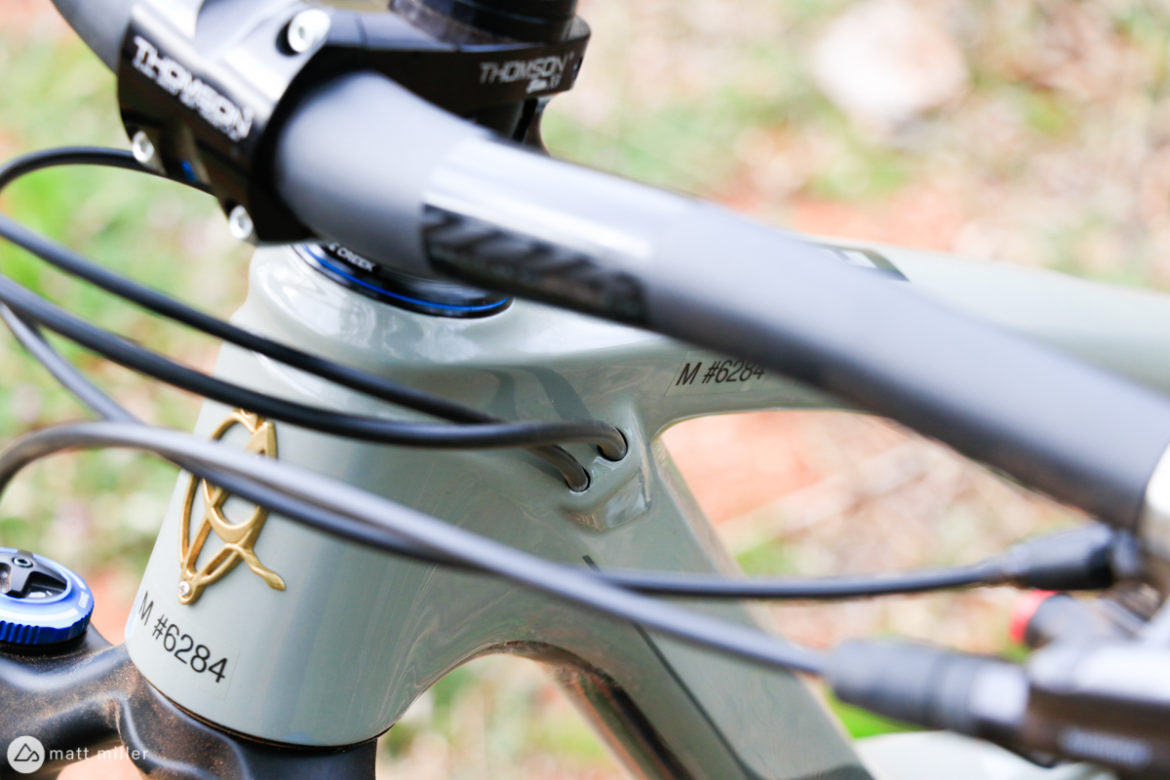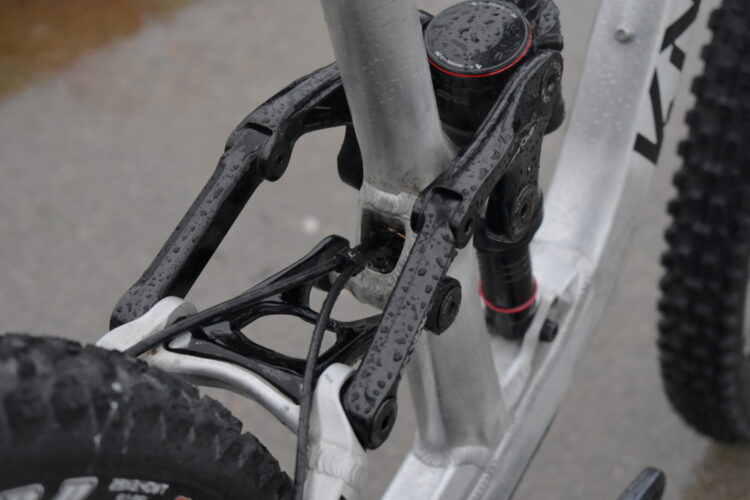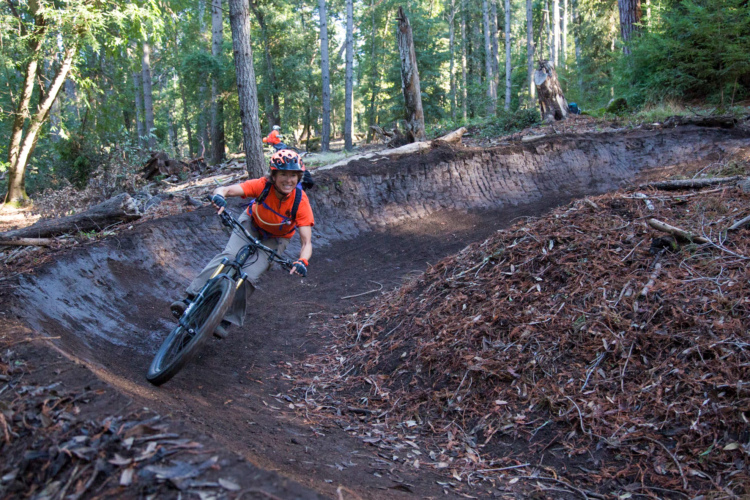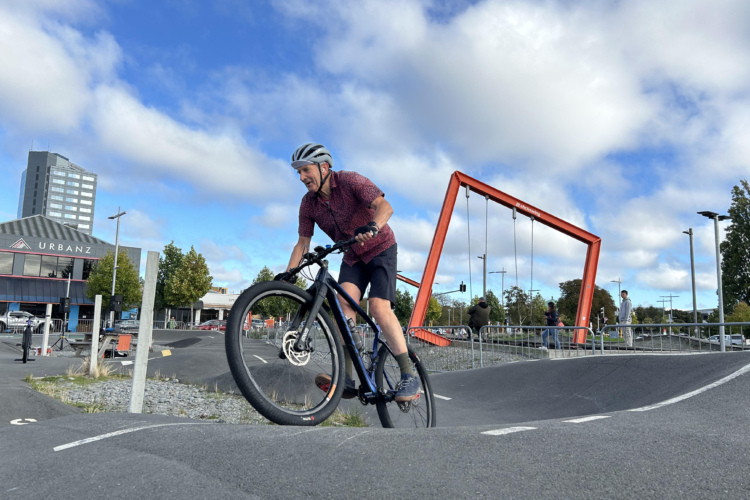
In the middle of February, Ibis updated their very popular Ripmo. As I combed through the press release and looked over the photos of the newest version, it was pretty clear that although they are calling the 2020 model their second version, it was more of a refinement than a sweeping overhaul.
The refinement versus overhaul was purposefully executed as the Ripmo has been a great bike for Ibis and very popular, and they didn’t want to take away from what has made it a great bike.
So, Ibis steepened the seat tube angle by a degree, and then they slackened the head tube angle by a degree, ending at a modern, but not overdone 77° and 64.9°, respectively. Aside from that, the geometry stayed very similar, although the wheelbase grew across all sizes, and so did the reach. The size medium grew the most of all the sizes.
The wheelbase grew 10mm on all sizes except medium where it grew 22mm. Similarly, the reach lengthened 13mm on size medium frames but only 2-5mm on the other sizes. The standover height is also now lower across all sizes.
The Ripmo kept a 160mm fork, but added 2mm of travel in the rear, along with a more progressive leverage rate, that now enables compatibility with coil shocks. The Ripmo AF actually led the charge on this front, with the Ripmo V2 following suit. Aside from that, the frame is still recognizable as a Ripmo and most will probably say that the ride quality is similar as well.
Ride impressions
After I slogged my bags up the hill to Posse Grounds Park in Sedona, Arizona, I picked up a Ripmo from the Ibis demo drivers who had just slogged themselves in off the highway. I set up the new Ripmo shooting for the recommended 28% sag mark, and caught a shuttle with some folks from Zoic to go ride Hiline. This seemed like a good idea to test the descending capability on the bike, and a bad idea since it was one of my first rides of the season, and my first ride back on a mountain bike in months. For those who don’t know, Hiline is a little technical.
Slowly but surely I chugged up the skinny, rocky, sidewall shaving trail of Hiline and I started to notice a few things about the Ripmo. First, the traction is no joke. Sedona is full of rolling climbs and descents, without any that go on for too long. The shorter climbs are often steep, and made up of sandstone, loose dirt on top of sandstone, or just loose dirt. As I punched up all of the above, the rear wheel didn’t skip a beat, and even when I got out of the saddle and lifted my weight toward the front of the bike on steep climbs, the Maxxis Assegai clung to the ground.
Now, traction like this is getting better across most bikes, but it’s often at the expense of anti-squat or climbing efficiency. The amazing thing about the Ripmo is how efficient and agile it feels on flat and buff trails. The 147mm travel 29er is far from feeling like a heavy, slacked out enduro sled on more moderate trails, which is refreshing. Instead, it is efficient and energetic to pedal. Even in standing sprints on flat trail, the Ripmo is eager to fly forward.

Although the 1219mm wheelbase makes for a pretty long bike, it didn’t feel unwieldy around switchbacks and tight trails. The medium Ripmo did feel a little long on certain climbs though, usually on steeper sections. I had to hug myself into the cockpit more than I would have thought on seated climbs, and the front wheel felt distracted and wandery at times. The 77° seat angle didn’t feel as steep as I would have expected either.
The added length in the wheelbase and reach, and the short seat tube means that riders can get lowww on the Ripmo on the way down. When people say that a good bike can help you get away with things, this was certainly the case when I rode it on Hiline in a foggy mental state. I entered the chute on Hiline with a little pepper, and careened down the dusty steps. With a little squeeze on the Shimano XTs, that performance-minded traction helped me keep the Ripmo on the rails and slow myself down.

The Ripmo isn’t the most enduro-ish bike in the Ibis lineup, but it’s still pretty dang enduro, and it handled the technical trails around Northern Arizona with ease. It’s quick to pick up speed on rocky trails and plows through rough stuff. I felt that it had more of a plow than play personality in Sedona and took some extra oomph to get the bike airborne.
How does it compare to the Switchblade?
If the Ripmo is Dave Franco, then the Pivot Switchblade is James Franco. Both are great, one has been around longer, and even though it’s hard to pick a favorite anymore, there are definitive differences. (Turns out they actually have a third brother, but we’ll leave him out for the sake of this making sense.) The Ripmo has 147mm of rear travel, while the Switchblade has 142mm. Both are controlled by DW-Link suspension. Both are 29ers that were just updated, and both have 160mm forks. Both brands’ athletes also use the 29ers on the EWS courses.
After I finished a few rides on the Ripmo, I turned it in, and then picked up a Switchblade. We’ll also publish our first impressions on the new Switchblade, but here are a few things I noticed between the two. To me, the Ripmo felt like an enduro bike that I could ride on my local trails without sweating too much. I could ride it on very challenging, rocky trails, but still enjoy it on more moderate ones. The Ripmo had better traction, climbing and braking, and more punch through choppy trail, but wasn’t as playful or easy to throw around as the Switchblade. If I raced enduro regularly or rode park more often than everyday trail rides, I’d probably choose the Ripmo because of its carefree attitude when it’s pointed downhill. If you’re still torn between the two, look for a little more insight on the Switchblade review.
Closing thoughts

The Ibis Ripmo V2 impressed me in a number of ways during my short time with the bike. The traction over anything loose is as good as it gets, and the efficient and sprite DW-Link rear suspension makes the Ripmo ready for long, all-mountain slogs in the saddle. Yes, the carbon fiber Ripmo is pricey (the XT version I rode rings in near $6,000) but they also have the affordable aluminum version, which may weigh more, but I’d guess that it doesn’t carry itself all that different from the carbon version. With all of its positive traits, the Ripmo V2 is going to be just as hard to beat as the first version.






















0 Comments